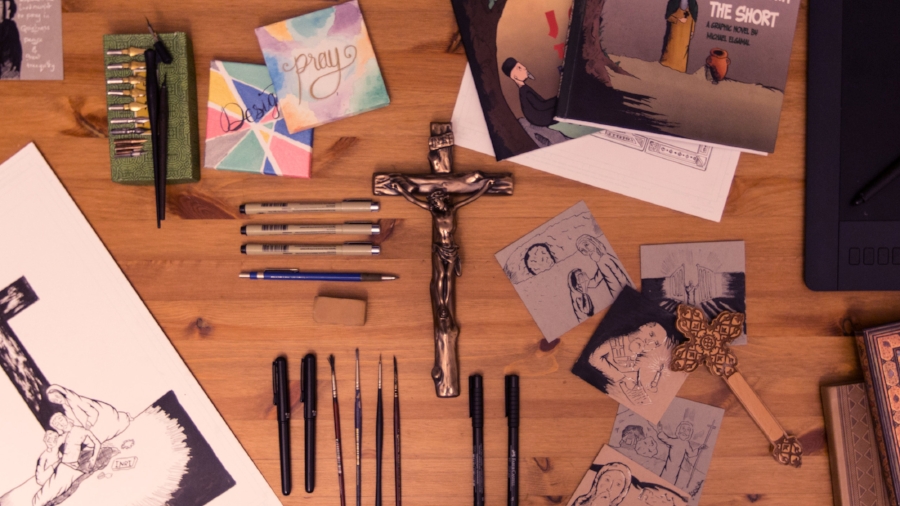The following guest post is by Michael Elgamal from Creative Orthodox, an artist and storyteller who retells the ancient stories of church fathers and mothers through modern storytelling. Creative Orthodox recently published the graphic novel “Anastasis: The Harrowing of Hades”, an exciting retelling of Christ's descent to Hades. If you too are interested in guest posting on my blog, please visit my Guest Post guidelines for more info.
The Story of Salvation
I firmly believe that God speaks to us in stories. All through church history we can see God's loving hand weaving stories in and out of church tradition to lead us along His plan for our salvation.
In the story of saint Mary of Egypt, for example, we learn that before she passes (after living in seclusion for 40+ years), the Spirit guides Abba Zosimas to her so he can receive her story and relay it to believers so they too can be inspired to imitate her way of life. Today, she's one of the most famous desert mothers, serving as an example in holiness for us even in a modern context.
Icons and Illustrations
If you walk into any ancient Christian church, you’ll quickly notice remnants of icons that tell the story of salvation and record the lives of various saints.
You’ll also start seeing similarities in style between ancient iconography (i.e. coptic icons in Bawit) and modern comic art. The crisp lines and altered compositions that favour storytelling to realism. Seems quite obvious, but it’s nothing short of thrilling to me.
When I first started writing and illustrating “Anastasis: the Harrowing of Hades”, a graphic novel on Christ’s descent to hades, I made sure to collect every iconographic representation of the story I could get my hands on. In a way, an icon is a single panel in a modern-day comic book (but is a lot more than that in a spiritual context!).
Even in sacred music we can hear the tunes and words we sing testifying and framing the church as a masterful storyteller, both visually and verbally. What’s more important, though, is that we are the Church, the one body of Christ. The love of the creator is what moves us to create, it’s what moves us to tell each other’s stories as we walk along the same path towards Christ.
The Creative Orthodox
I recently started seeing Saint Athanasius not only as a saint, theologian and a teacher, but also as a creative writer. Not to trivialize his monumental work, but he was simply a faithful servant who decided to write firstly about the life of the pious man Antony, and also write “Against the heathen” and “On the Incarnation” as a defense of the cross he firmly believes in.
In context, the writings of Saint Athanasius aren’t theologically complicated or overly-philosophical. When read with cultural and linguistic contexts in mind, the work proves to be a simple explanation of the faith; he even makes several cultural references to a then-famous sculptor to help deliver his message. This is the work of a man creatively telling the story of the faith in a current and relevant manner.
Looking at Saint Athanasius in this light helps me see my role in the church under a very different lens. If Saint Athanasius didn’t write, the story of the great saint Antony wouldn’t be as famous as it is today, a story that arguably inspired thousands of monks to pursue monasticism.
Comics, Christ and Culture
This non-surprising revelation can be met non-enthusiastically with “duh, humans love stories and images, and Christians are humans too, so that’s how we communicate!” - but that’s exactly my point.
As present-day Christians, we have the responsibility to create. We have the responsibility to keep the stories of the bible and the lives of the Church fathers and mothers current and easy to read. If you’re an artist, draw, if you’re a poet, write, and if you’re a film-maker, film – because if God speaks to us in stories, we should be telling them.


